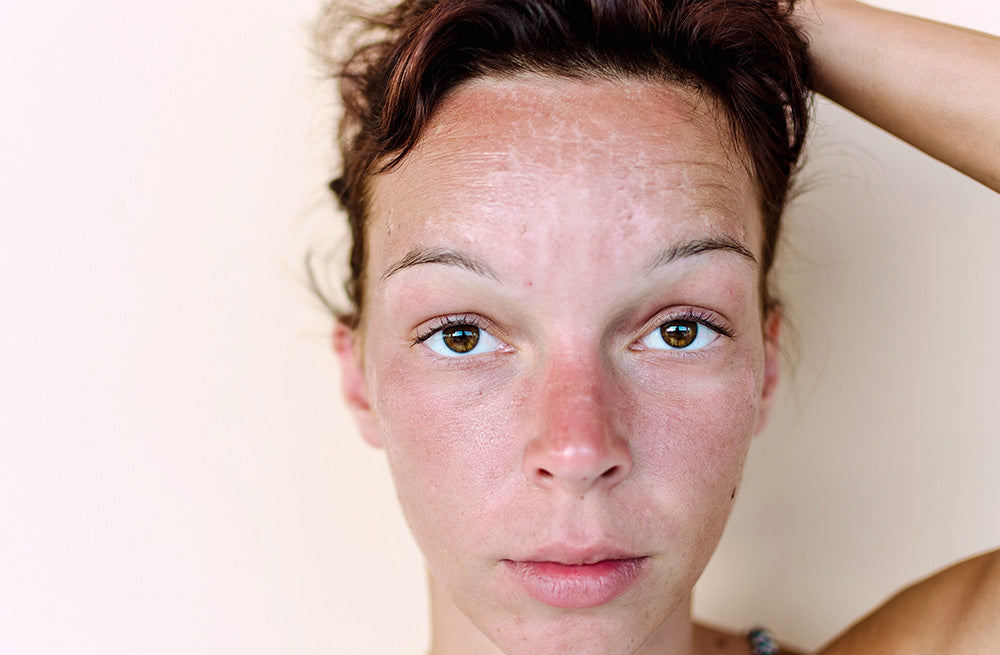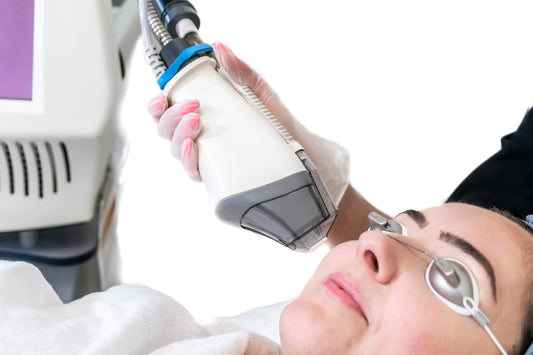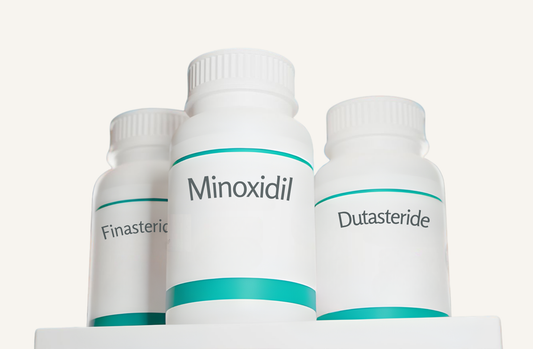Article Summary
Having a healthy relationship with the sun can be tricky. After all, when your skin is exposed to sunlight, it produces vitamin D. This vitamin is essential for building healthy bones as it helps us retain calcium, and it also plays a role in reducing cancer cell growth, helping to control infections, and reducing inflammation.1
However, without sun protection, your skin is vulnerable to damage ranging from wrinkles and sunspots to skin growths and cancer. If you haven’t been so careful in the past, maybe you already notice some signs of sun damage on your face. Is there any way to turn back the clock? And, if so, what are the best treatments for sun damaged skin? Here to answer that question is Dr. Anthony Nuara, MD PhD FAAD.
What Causes Sun Damage?
Sun damage, or photodamage, is caused mostly by ultraviolet (UV) light, which causes DNA changes at a cellular level. UV light is classified as a “complete carcinogen” because of its ability to mediate mutations that can lead to cancer and grow tumors.2
According to experts at Yale Medicine, photodamage also happens in the dermis, which is the deepest layer of the skin, leading to collagen damage and accelerated aging that may take years to become visible.3
What Damage Can UV Rays Cause?
UV rays don’t just prematurely age your skin, but they also make your skin more vulnerable to cancer. Not all UV radiation is the same, but they each cause their own harm.
UV radiation is separated roughly into three types:
- UVA: This type of radiation is what penetrates the deepest into the dermis causing reactive oxygen species that damage DNA and degrade collagen, which your skin needs to remain strong and elastic.
- UVB: This type is absorbed almost completely in the epidermis and into the DNA of the cells, resulting in mutations that often lead to skin cancers. Outside of the cancer risk, UVB rays set off an inflammatory cascade, or cytokines response, resulting in what we commonly call a sunburn.
- UVC: UVC radiation is the most dangerous to our DNA, but thankfully most of this is absorbed by the ozone layer and does not reach us.
Symptoms Of Sun Damage
Sun damage can be as simple as brown spots or pigmentation like melasma to deeper long-term wrinkling and sagging of the skin from the degradation of collagen.
The most common symptoms of sun damage on the face include:
- Lines and wrinkles around eyes and mouth
- Spider veins on your nose and cheeks
- Pigmentation changes, like brown spots or patches (melasma), freckles, liver spots, and age spots
- Sagging and loss of elasticity
- Rough, scaly, or uneven skin texture
- Worry lines across your forehead, even when relaxed
Is Sun Damage Reversible?
Sun damage is reversible to a degree. Protecting yourself from new UV damage with high SPF sunscreens and sun avoidance allows our natural DNA repair mechanisms to clean up some of the damage.
A board-certified dermatologist can also often use techniques like liquid nitrogen or topical chemotherapy to treat advanced sun damage and early skin cancers. Laser resurfacing is another option that can help by removing the top layer of damaged skin.
Using products that contain antioxidants like polyphenol or niacinamide can aid in repairing the free radical damage. Niacinamide also has the advantage of contributing to cellular repair of DNA damage. Cosmetic sun damage can also be repaired and potentially reversed with retinoids, which boost collagen and accelerate cellular turnover.
Vitamin C Lotion 20%
• Increased collagen production renews skin
• Antioxidant power repairs discoloration
Foundation Skincare Products That Help With Sun Damage
If you’re noticing signs of sun damage or want to prevent such signs in the future, using a sunscreen with an SPF of 30 or higher (ideally 50) is a must. You can also integrate the following products into your skincare regimen:
- Foundation Skincare Azelaic Acid Cream: Made with a 14% concentration of azelaic acid, this product offers the highest non-prescription percentage available on the market, but is gentle enough so it won’t dry out or irritate skin. Not only does it help reduce signs of aging, including fine lines, wrinkles, and uneven texture, but it minimizes the appearance of hyperpigmentation by inhibiting an enzyme called tyrosinase. In one 24-week study on subjects with hyperpigmentation, azelaic acid produced significant decreases in pigmentary intensity.4
- Foundation Skincare Vitamin C Lotion: This product combines vitamin C with a hydrating base to moisturize, brighten, and protect your skin from damage. It also promotes collagen production to reduce the appearance of fine lines and wrinkles. Vitamin C has been shown to have antioxidative, photoprotective, antiaging, and anti-pigmentary effects.5 In one impressive study, topical vitamin C significantly reduced photodamage and improved the periorbital area, indicating better hydration.6
- Foundation Skincare Niacinamide Lotion: With a potent 10% concentration of the active ingredient, this product helps fade dark spots and brighten skin by reducing melanin deposits and enhances DNA repair to improve photodamaged skin. Niacinamide also boosts collagen and keratin production to reduce the appearance of fine lines and wrinkles and tighten sagging skin. The product is made with a hyaluronic acid base to hydrate, moisturize, and prevent irritation. Studies show that due to its antioxidant properties and ability to penetrate deeply into the skin, niacinamide enhances barrier function while significantly decreasing dark spots, redness, and inflammation.7
- Foundation Skincare Night Renewal Cream: The star of this product is Granactive Retinoid (AKA hydroxypinacolone retinoate), a non-prescription retinoid that has been shown to provide all the benefits of traditional prescription retinoids, but with a lower risk of irritation and dryness than prescription options. Extensive and well-controlled clinical studies have shown a consistent improvement in the appearance of photodamaged skin over 3-6 months of daily treatment. Improvements included decreases in surface roughness, irregular pigmentation, fine and coarse wrinkling, and skin sallowness.8 The Night Renewal Cream includes additional ingredients like aloe, shea butter, chamomile, and olive leaf extract to moisturize skin and enhance barrier function.
- Foundation Skincare Pigmentation Defense: Address photodamage from within with this comprehensive supplement. A custom blend of vitamins, antioxidants, and herbs help like polypodium leucotomos extract, ginkgo biloba, vitamin C, vitamin E, and alpha lipoic acid defend against free radicals and fade discoloration while balancing natural melanin production.
- Foundation Skincare Spectrum: This is another supplement, which can help protect the skin from the damaging effects of the sun. Like Pigmentation Defense, this product contains antioxidants like polypodium leucotomos in addition to other ingredients like anti-inflammatory milk thistle leaf and nicotinamide to repair DNA.
You may not be able to reduce every aspect of sun damaged skin, but you can reverse some of its effects and protect your skin from future damage with the right skincare regimen. Instead of regretting those beach days of your youth, start being proactive about how to protect your skin right now. Find more tips on maintaining healthy skin in the FS Journal.
References:
-
https://www.hsph.harvard.edu/nutritionsource/vitamin-d/
-
https://www.ncbi.nlm.nih.gov/pmc/articles/PMC3709783/
-
https://www.yalemedicine.org/conditions/sun-damage
-
https://www.sciencedirect.com/science/article/abs/pii/S0149291898800763
-
https://www.ncbi.nlm.nih.gov/pmc/articles/PMC5605218/
-
https://pubmed.ncbi.nlm.nih.gov/11896774/
-
https://www.ncbi.nlm.nih.gov/pmc/articles/PMC2921764/
-
https://pubmed.ncbi.nlm.nih.gov/1390181/






